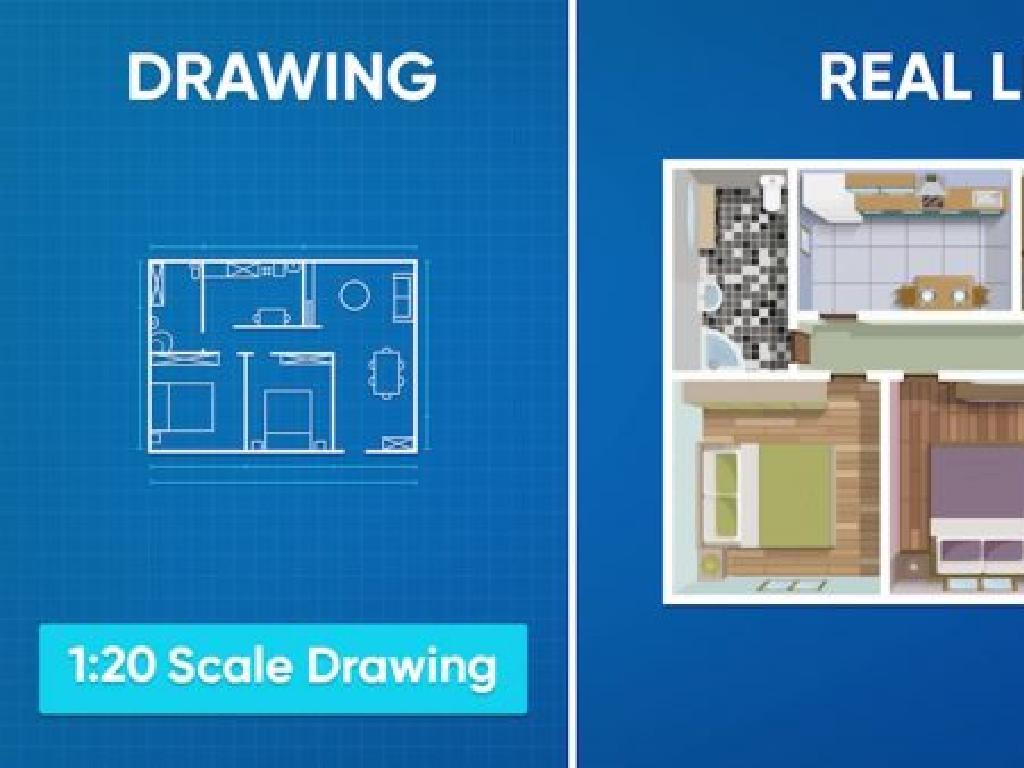Understanding Negative Exponents
Subject: Math
Grade: Eighth grade
Topic: Exponents
Please LOG IN to download the presentation. Access is available to registered users only.
View More Content
Understanding Negative Exponents
– Recap of exponent basics
– Exponents represent repeated multiplication, e.g., 3^2 = 3 * 3.
– Introducing negative exponents
– Negative exponents like x^-n mean 1/(x^n), not a negative result.
– Negative exponents ` negative numbers
– Simplifying expressions with negative exponents
– To simplify, write as a fraction: (2^-3 = 1/(2^3) = 1/8).
|
Begin with a brief review of what exponents are and how they’ve been used to represent repeated multiplication. Then, introduce the concept of negative exponents, emphasizing that they do not indicate a negative result but rather a reciprocal. Clarify that a negative exponent tells us how many times to divide by the number. Provide examples to illustrate how to simplify expressions with negative exponents, converting them into fractions. Encourage students to think of negative exponents as flipping the base to the denominator of a fraction. Prepare to address common misconceptions and ensure understanding through practice problems.
Understanding Negative Exponents
– Exponents: Repeated multiplication
– Example: 3^2 = 3 * 3
– 3^2 is 3 multiplied twice, equals 9
– Negative exponents: Inverse operation
– For 3^-2, think of 1 over 3^2, which is 1/9
– Simplifying negative exponents
– To simplify, write as a fraction: 2^-3 equals 1/2^3 or 1/8
|
Begin with a quick review of what an exponent is, emphasizing that it signifies repeated multiplication of a number by itself. Use the example of 3^2 to illustrate this concept. Then, introduce negative exponents by explaining that they represent the inverse operation; for instance, 3^-2 means 1 divided by 3^2. Encourage students to think of negative exponents as a way to express fractions. To simplify expressions with negative exponents, guide them to write the exponent as a positive in the denominator. Provide practice problems to help them get comfortable with this process.
Positive vs. Negative Exponents
– Positive exponents: repeated multiplication
– Negative exponents: inverse operation
– A negative exponent means divide, as opposed to multiply
– Example with positive exponent
– For 2^3, multiply 2 by itself 3 times: 2 x 2 x 2 = 8
– Example with negative exponent
– For 2^-3, divide 1 by 2, three times: 1/(2 x 2 x 2) = 1/8
|
This slide introduces the concept of exponents, contrasting positive and negative exponents. Positive exponents, such as 2^3, indicate standard repeated multiplication. Negative exponents, like 2^-3, represent the inverse operation, which is repeated division, or multiplying by the reciprocal. It’s crucial to emphasize that a negative exponent does not make the number negative but instead signifies how many times to divide 1 by the number. Provide clear examples to illustrate the concept, ensuring students understand the process of converting a negative exponent into a division problem. Encourage students to practice with additional examples to solidify their understanding.
Understanding Negative Exponents
– Negative exponents represent division
– Example: 2^-3 explained
– 2^-3 means 1/(2*2*2) or 1/8
– Simplifying negative exponents
– To simplify, write as 1 over the number to the positive exponent
– Practice with different bases
– Try examples like 3^-2 or 5^-1 to understand the pattern
|
This slide introduces the concept of negative exponents, which is often a new and challenging idea for eighth graders. Emphasize that a negative exponent indicates division, not multiplication. Use the example 2^-3 to show students how to translate this into division (1 divided by 2, three times). Encourage students to simplify expressions with negative exponents by writing them as fractions. Provide additional examples with different bases to ensure students recognize the pattern and understand that the base can be any number. Instruct students to practice with these examples and prepare to solve similar problems in class.
The Rule of Negative Exponents
– Understanding a^-n = 1/a^n
– Why the negative exponent rule is logical
– Consider a^3 divided by a^5; we subtract the exponents: a^(3-5) = a^-2
– Breaking down the rule
– a^-n means 1 divided by a^n, flipping the base to the denominator
– Applying the rule in equations
– If we have 2^-3, it equals 1/(2^3) or 1/8
|
This slide introduces the fundamental concept of negative exponents, which often confuses students at first. Start by stating the rule clearly: a^-n equals 1 over a to the power of n. Explain that negative exponents indicate the reciprocal of the base raised to the positive exponent. Use simple examples to show that subtracting exponents when dividing like bases leads to the negative exponent rule. Emphasize that a negative exponent doesn’t mean a negative result; it’s a way to represent division of the base raised to a positive exponent. Practice with the class by applying the rule to different bases and exponents to solidify their understanding.
Understanding Negative Exponents
– Negative exponents represent reciprocals
– Example 1: Calculating 5^-2
– 5^-2 means 1 divided by 5 squared, which equals 1/25
– Example 2: Evaluating (1/3)^-3
– (1/3)^-3 means the reciprocal of 1/3 cubed, resulting in 27
|
This slide introduces students to the concept of negative exponents and how to calculate them with examples. Negative exponents indicate the reciprocal of the base raised to the positive exponent. For example, 5^-2 is the same as 1 divided by 5 squared, which simplifies to 1/25. Another example is (1/3)^-3, which means we take the reciprocal of 1/3 and cube it, resulting in 27. It’s crucial to ensure students understand the process of flipping the base and raising it to the positive exponent. Practice these examples together and encourage students to solve similar problems to grasp the concept fully.
Practice Problems: Negative Exponents
– Solve 10^-1
– Remember, 10^-1 = 1/10
– Calculate (1/2)^-4
– (1/2)^-4 means 1 divided by (1/2)^4
– Find the value of 7^-2
– 7^-2 is the same as 1/7^2
– Write your answers
|
This slide is designed to provide students with practice on applying their knowledge of negative exponents. Encourage them to remember that a negative exponent indicates the reciprocal of the base raised to the absolute value of the exponent. For example, 10^-1 is the reciprocal of 10^1, which is 1/10. Similarly, (1/2)^-4 is the reciprocal of (1/2)^4, which means we need to flip the fraction and raise it to the fourth power. For 7^-2, students should recognize it as 1 over 7 squared. Have students solve these problems individually, and then discuss the answers as a class to ensure understanding. Provide additional examples if time allows and encourage students to explain the process to reinforce their learning.
Real-World Applications of Negative Exponents
– Negative exponents around us
– Scientific notation usage
– Express very large or small numbers, e.g., Avogadro’s number: 6.02 x 10^-23
– Decibels in sound explained
– Sound intensity measured in decibels, a logarithmic scale using negative exponents
– Grasping large & small scales
– Understanding scales from microscopic to cosmic with ease
|
This slide aims to show students how negative exponents are not just theoretical concepts but are used in everyday life, especially in scientific fields. Scientific notation, which often uses negative exponents, allows us to work with extremely large or small numbers, such as those found in chemistry when dealing with the size of atoms or the number of molecules. Decibels, used to measure sound intensity, are another example where negative exponents come into play, helping to express the vast range of audible sounds in a manageable way. Encourage students to think of other areas where they might encounter negative exponents and to appreciate the role of exponents in simplifying complex information.
Class Activity: Exponent Card Game
– Understand negative exponents
– Match equivalent expressions
– Find a pair where one expression uses a negative exponent and the other a positive
– Negative vs. positive exponents
– Learn the relationship between negative and positive exponent forms
– Engage in peer learning
|
This interactive card game helps students grasp the concept of negative exponents by matching them with their equivalent positive expressions. Prepare a deck of cards with various expressions, ensuring there are pairs with one expression written with a negative exponent and the equivalent with a positive exponent. For example, one card could have 2^-3 and its match would be 1/2^3. Students will work in pairs or small groups to find and match the equivalent expressions. This activity promotes peer learning and discussion, reinforcing the understanding that a negative exponent indicates the reciprocal of the base raised to the corresponding positive exponent. Possible variations of the game could include having students solve the expressions before matching, timing the activity for a competitive edge, or having students create their own sets of matching cards as part of the learning process.
Wrapping Up: Negative Exponents
– Congratulations on your hard work!
– Homework: Worksheet on negative exponents
– Practice applying the rules of negative exponents
– Aim for complete understanding
– Try to solve the problems without a calculator
– Discussion in the next class
– Be prepared to explain your reasoning
|
This slide marks the conclusion of the lesson on negative exponents. The homework assignment is designed to reinforce today’s learning and ensure students practice applying the rules for negative exponents. Encourage students to attempt the worksheet without the use of a calculator to strengthen their mental math skills. In the next class, there will be a discussion where students will share their answers and methods, providing an opportunity for peer learning and further clarification of any misunderstandings. Remind students that the goal is not just to complete the worksheet but to understand the concepts deeply.




